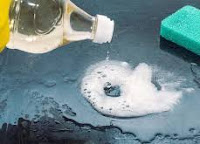During COVID I re-discovered Pine-Sol, a household cleaner that kills 99% of germs on surface areas and is also used to clean grease and heavy stains. It was invented in 1929 by Harry A. Cole of Mississippi using pine oil as an ingredient. In 2016 Cloxox, its manufacturer, removed pine oil from the formula sold in stores to save money.
Since today's in-store Pine-Sol doesn't contain pine oil I switched to Pinalen, an equivalent cleaner that still contains pine oil.
Pinalen is comprised of water, pine essential oil, sodium laurate, sodium oleate, dodecanoic acid, sodium salt, isopropyl alcohol, and benzenesulfonic acid.

So now I have to contradict Clorox. Although the makers of Pine-Sol say it won't hurt your toilet tank, I wouldn't add it to the tank regularly (only if you need to clean a dirty or moldy tank initially) because the disinfectant and its equivalent cleaners are acidic. The rubber pieces in the tank's cistern will erode, causing the flushing mechanism to malfunction. It won't hurt used infrequently, but that's why I only put a few drips in just the toilet bowl.
In addition to bathrooms, Pinalen cleans laundry, kitchen counters and appliances, floors, walls, garages, and backyard fixtures.
It's less expensive than Pine-Sol. I buy the one-gallon (128 fl oz or 3.785L) concentrated size, then dilute it with water (a 50/50 ratio) in a spray bottle to clean. Less product is required in a bucket of water to mop a floor. Mix 1/8 cup of solvent with 1 gallon of water. Available at Walmart, Walgreens, and Amazon. Pine oil smells amazing though perhaps it's not to everyone's liking.
















